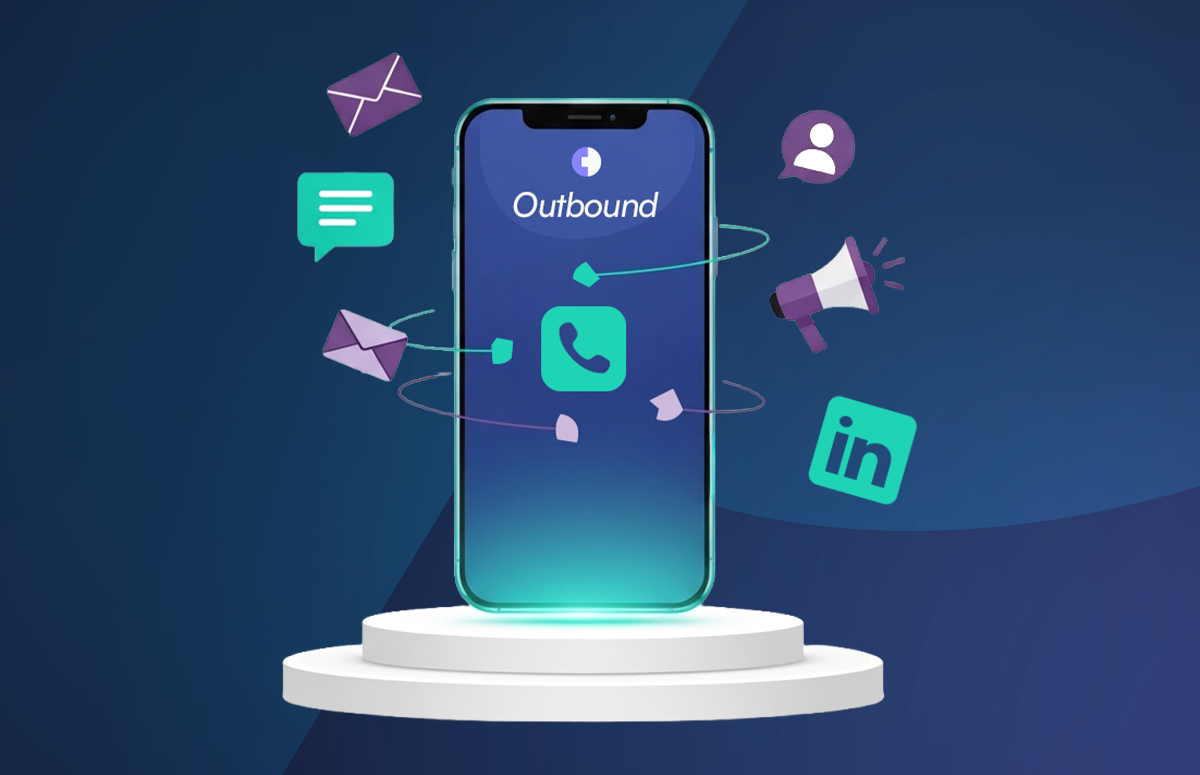How to Create an Effective Sales Incentive Plan
Sales can be a mentally taxing career. The ups and downs, the rejection, the emotional labour – it mounts up. And naturally, sometimes standards can slip, like neglecting admin or losing momentum.
That’s why sales leaders sometimes need ways to galvanise and re-orient their sales teams.
With the help of Catherine Olivier, VP of Global Sales Development at Cognism, we’ve put together a guide to creating a sales incentive plan.
In this blog, we’ll touch on:
- How sales incentives drive behaviours and outcomes.
- Challenges of creating incentive plans that work.
- The pitfalls of incentive plans.
First, let’s look at how incentives fit within broader performance-driving tools.
Incentives within the sales performance mix
Companies use a whole slew of methods to juice maximum performance from their sales teams.
After all, sales have the most direct influence on a company’s revenue growth. Each plays a different role in influencing the psychology of a sales organisation, from encouraging personal and company success to nailing the basics and overcoming adversity.
Incentives need to be seen within the context of the whole.
Base salary and commission
In nearly all sales jobs, compensation is split between base salary and commission. Earning potential is often weighted heavily towards commission, while others have a more even split.
High-commission sales roles are great opportunities for highly proactive salespeople, but these jobs might have a revolving door, hire-’em-fire-’em element.
But whatever balance is struck, commission is a powerful motivator for a salesperson to perform at their best.
Bonus
Outside pay structure, bonuses are used to align a salesperson with company-level goals.
Being the staff with the most direct influence on company performance, bonus schemes are a little more tangible for sales than other departments and thus more of a motivating factor.
Training
While training is not part of an incentive plan, it should be considered an important part of sales performance.
Sharpening sales skills through training is another way of driving sales performance. Increasing product knowledge, administration skills, sales tool skills and, of course, improving sales skills (pitching techniques and other sales skills) will also drive improvements.
Salespeople see a lot of the carrot, but sometimes they need a bit of the stick, too!
Incentives
Incentives are (usually) non-cash prizes that provide additional boosts to motivation or performance. They can build confidence and overcome hesitancy or re-motivate a team during a difficult or quiet period, among other things we’ll get to later in this blog.
Incentives are often vouchers, experiences or gifts, and while these all have a cash value, the motivation of a designated ring-fenced thing is different to cash, which might end up going towards a bill or something dull like that.
A common form of incentive structure is a spiff, which is a short-term bonus given to a salesperson for achieving a sales goal within a certain time frame. Spiffs (sometimes incorrectly referred to as SPIFs) incentivise salespeople to sell a specific product or reach a certain target.
Compensation structure and training are higher-order factors in sales performance than incentives. A compensation structure and training programme should be settled on before moving on to an incentive plan.
Don’t fall into the trap of trying to incentivise your way out of an inadequate training programme or misaligned compensation structures.
What can you influence with sales incentives?
We’re going to start this section by talking about what you can’t incentivise, and why you shouldn’t try to.
It can be tempting to incentivise behaviours that are just part of the job, resulting in a low baseline of standards. A level of professional standards need to be met.
What not to incentivise
Work harder
Trying to incentivise a salesperson to work harder is a fool’s pursuit.
Catherine explained the unwanted effect of trying to incentivise someone to work harder:
“You start targeting measurable sales activity for the sake of doing it. It drives volume, numbers for the sake of numbers and results in a lack of research and personalisation. It’s better to make good calls than more bad ones.”
Work more collaboratively
This is not something that can be incentivised.
Salespeople don’t like to rely on others to hit their targets. Team structure and training are better ways of encouraging salespeople to work together and with non-salespeople more effectively.
Specific sales metrics
Don’t use incentives to drive sales metrics such as deal size or pipeline. Catherine said:
“Incentivising metrics is creating a system ripe for being gamed. Incentivising pipeline could result in a salesperson inflating their pipeline with low-quality leads for the sake of it, and being rewarded for it.“
Administration
A big part of sales is admin – keeping on top of call data and managing lists of prospects.
But we don’t advise incentivising this. Catherine said:
“I’m not going to pay extra for basic elements of sales. Being organised is part of the job – a basic expectation. But I will train on it.”
Enough negativity! Let’s move on to what you can incentivise.
Incentives are often about emotions
When designing an incentive plan, it can be helpful to think about it in terms of psychology and the emotions an incentive plan can generate.
Aspirations and energy
Many companies run an incentive programme that offers an extravagant reward for top-performing sales representatives. Often called the President’s Club, the reward is often a place on a company holiday to a luxurious destination.
And the secondary rewards – a chance to rub shoulders with top brass and the social prestige of being a recognised top performer – are arguably more motivating than the destination itself.
On President’s Clubs, Catherine said:
“It should be very elite, and very clearly measured to avoid confusion. But from my experience it’s a great addition to the comp plans and spiffs.”
It’s an unbelievable perk (and one we’ve recently introduced at Cognism) that generates buzz and excitement. It highly motivates sales staff to surpass their normal performance expectations.
Confidence
Sales can be a turbulent career, with highs and lows. A sales manager can use incentives to build up the confidence of a struggling rep by incentivising them to push through whatever they’re struggling with.
If an individual or a team is low on confidence, incentives can provide a shot in the arm. If confidence is something your team particularly struggles with, check out our 10 tips for when morale is low.
Overcoming hesitancy
Short-term incentives can be a good way of helping a team familiarise themselves with a new sales tool or channel.
Catherine explained how she has incentivised teams to overcome hesitancy:
“If I see an issue with something, such as calls or emails or social media presence, I will incentivise that thing with a spiff for a month to break through any inhibitions.”
“One example was getting my team to boost their LinkedIn Social Selling Index (SSI). Social media can be unfamiliar terrain from a sales perspective, so really pushing my team to boost their score helped them push past reluctance. The reward made the initial discomfort worthwhile.”
Getting incentive size right
Some incentives can be positive or negative depending on their size. A team-based incentive is an example of when a small incentive can be better.
If you tie a big incentive to a team-level goal, frustration can result; salespeople want to be in charge of their own destiny. A substantial reward based on uncontrollable factors can be demotivating.
But if the reward is small, like a gift card, it can be a nice boost for a team that helps keep positivity ticking over.
Likewise, a President’s Club event at a Holiday Inn won’t work – the reward has to match the achievement.
Incentivising different teams and roles
Given their different objectives and seniority, it can be a good idea to differentiate incentives for AEs and SDRs.
We find for teams of SDRs, incentives focused on high-energy competitions produce good results. These are also a great opportunity to expose junior SDRs to the working habits of the more established colleagues.
At Cognism, our SMB SDRs are promoted into the Enterprise segment, so competitions that see SMB and Enterprise SDRs working together work well.
For AEs, we have found that goal-oriented competitions incentivise high performance.
Brahm Jagpal, Senior Sales Manager at Cognism, shared some examples of goal-oriented competitions:
“If demos are low, focus on pushing self-generated demos. If deals need to be closed, create competitions centred around closing deals.”
What makes a good incentive plan
Let’s run through what separates a good incentive plan from a bad one.
1. Team incentives need to be winnable by anyone
David Bentham, VP GTM at DinMo, told us:
“If you’re going to use incentives, make sure that every person in your team could win it. We reward the highest performers through their commission. Extra incentives should be available to any member of the team.”
Incentives that feel intended to be won by team members with, e.g. seniority or bigger clients, will be demotivating for the remaining staff and reinforce a social hierarchy.
2. Set clear and attainable targets aligned with business goals
A good framework to follow when setting incentives is the SMART framework. SMART stands for specific, measurable, achievable, realistic and time-bound.
A goal aligned with each of the five points will motivate individuals and teams to work towards company-level goals.
3. Incentivise inputs rather than outputs
The idea here is you want to use incentives to target the controllables.
Incentivising something with inherent unpredictability like closing deals, where you can do everything right but still fail, can be frustrating.
4. Set compensation goals around outputs
Of course, outputs are where the real value is at, so you should reward completed sales via commission and exceptional rewards like a President’s Club trip.
That’s the core of what sales is, after all.
5. Don’t build a system that can be gamed
We’ll illustrate this point with a story from Catherine of an incentive that backfired. She recalled:
“One of my old managers wanted us to be making more cold calls. The competition was whoever made the most connected calls on a Wednesday would earn £250. I was covering Benelux on a Wednesday – and on Wednesday in Luxembourg, things shut down, so I had no chance.”
“But I realised there was no requirement to talk – just connect. So I called every single municipality in Belgium, made 500 calls and left 500 voicemails.”
“I won!”
Let that be a lesson to anyone designing an incentive plan – always look for ways that the incentive could produce undesired outcomes.
Conclusion
Sales is a demanding career, and even the best teams need a boost now and then. A well-designed incentive plan can reignite motivation, overcome obstacles and reward behaviours that drive results.
But you can’t incentivise your way out of a poorly designed compensation structure and weak training programmes.
In short, an effective sales incentive plan is a tactical tool used to solve problems within a short-term timeframe.

/Cold%20calling%20strategy/cold-calling-strategy-card.webp)

